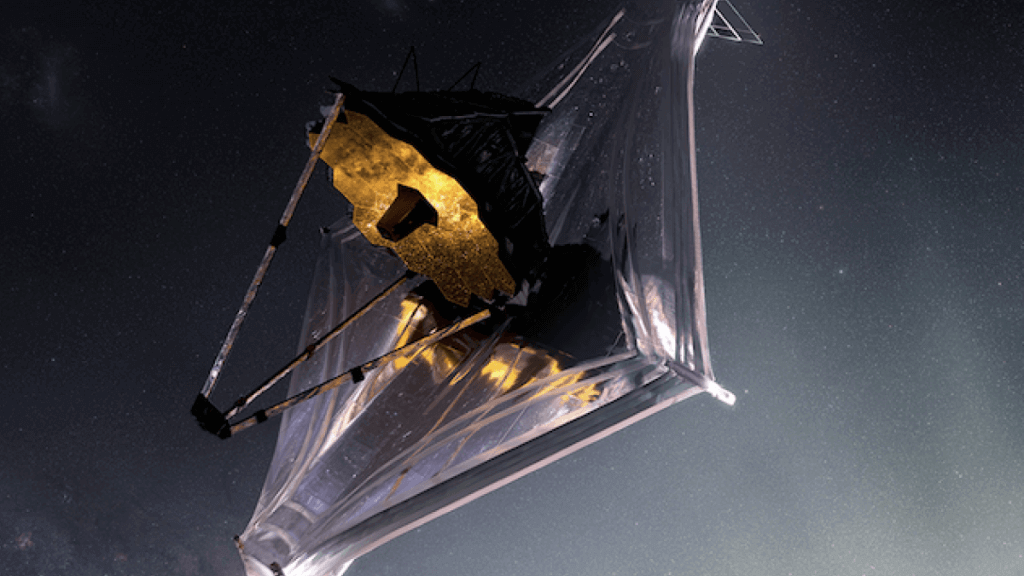
Webb telescope probes space explosion and makes fascinating discovery (Image Credit: Mashable)
This blast was a “gamma-ray burst” containing the most energetic type of light that’s often generated by the collapse and explosion of enormous stars, events called supernovae. But the eruption in March 2023, dubbed “GRB 230307A,” wasn’t any ordinary gamma-ray burst. It was 1,000 times brighter than the typically observed burst, and the rays hit our instruments for a whopping two minutes. Usually, they last just two seconds.
In new research published in the peer-reviewed journal Nature, scientists conclude that a momentous type of explosion called a “kilonova” created the blast. And researchers suspect two curious objects called neutron stars — objects so incredibly dense that a teaspoon of neutron star weighs around a whopping 1 billion tons — collided, triggering the explosion.
Crucially, astronomers theorize that important elements and metals, like gold and platinum, are forged in these outbursts. In this kilonova, the Webb telescope detected the rare element tellurium, which on Earth is rarer than platinum (and platinum is some 30 times rarer than gold).
It’s a significant find. The same blast likely made other elements close to tellurium like iodine, “which is needed for much of life on Earth,” NASA explains.
“Just over 150 years since Dmitri Mendeleev wrote down the periodic table of elements, we are now finally in the position to start filling in those last blanks of understanding where everything was made, thanks to Webb,” Andrew Levan, an astrophysicist at Radboud University in the Netherlands and the University of Warwick in the UK who led the research, said in a statement.
In the Webb telescope image below, you can see the source of the potent gamma-ray burst. That red dot is the distant kilonova. Other instruments, like NASA’s gamma-ray-detecting Swift observatory, allowed the researchers to pinpoint the source of the blast. To the right is the galaxy where these dense, massive neutron stars originated.
Below the image is a graphic showing how Webb detected the rare, heavy metal tellurium, which was likely forged in this outburst. One of Webb’s most vital investigative instruments is its spectrograph, called NIRSpec (Near-Infrared Spectrograph). This instrument separates out the types of light coming from an object, similar to a prism separating visible light into a rainbow of colors. Certain wavelengths, or types of light, correspond to different elements or molecules. In this case, the Webb’s spectrum showed clear signs that tellurium was present in that kilonova.

Credit: NASA / ESA / CSA / STScI / A. Levan (Radboud University and University of Warwick)

Credit: NASA / ESA / CSA / Joseph Olmsted (STScI)
In the coming years, astronomers expected to find more rare, heavy metals, forged by explosions in the deep cosmos.
“Webb has certainly opened the door to do a lot more, and its abilities will be completely transformative for our understanding of the universe,” Ben Gompertz, an astronomer at the University of Birmingham who worked on the research, said in a statement.
The Webb telescope’s powerful abilities
The Webb telescope — a scientific collaboration between NASA, the ESA, and the Canadian Space Agency — is designed to peer into the deepest cosmos and reveal new insights about the early universe. But it’s also peering at intriguing planets in our galaxy, along with the planets and moons in our solar system.
Want more science and tech news delivered straight to your inbox? Sign up for Mashable’s Light Speed newsletter today.
Here’s how Webb is achieving unparalleled feats, and likely will for decades:
– Giant mirror: Webb’s mirror, which captures light, is over 21 feet across. That’s over two and a half times larger than the Hubble Space Telescope’s mirror. Capturing more light allows Webb to see more distant, ancient objects. As described above, the telescope is peering at stars and galaxies that formed over 13 billion years ago, just a few hundred million years after the Big Bang.
“We’re going to see the very first stars and galaxies that ever formed,” Jean Creighton, an astronomer and the director of the Manfred Olson Planetarium at the University of Wisconsin–Milwaukee, told Mashable in 2021.
– Infrared view: Unlike Hubble, which largely views light that’s visible to us, Webb is primarily an infrared telescope, meaning it views light in the infrared spectrum. This allows us to see far more of the universe. Infrared has longer wavelengths than visible light, so the light waves more efficiently slip through cosmic clouds; the light doesn’t as often collide with and get scattered by these densely packed particles. Ultimately, Webb’s infrared eyesight can penetrate places Hubble can’t.
“It lifts the veil,” said Creighton.
– Peering into distant exoplanets: The Webb telescope carries specialized equipment called spectrographs that will revolutionize our understanding of these far-off worlds. The instruments can decipher what molecules (such as water, carbon dioxide, and methane) exist in the atmospheres of distant exoplanets — be they gas giants or smaller rocky worlds. Webb will look at exoplanets in the Milky Way galaxy. Who knows what we’ll find?
“We might learn things we never thought about,” Mercedes López-Morales, an exoplanet researcher and astrophysicist at the Center for Astrophysics-Harvard & Smithsonian, told Mashable in 2021.
Already, astronomers have successfully found intriguing chemical reactions on a planet 700 light-years away, and as described above, the observatory has started looking at one of the most anticipated places in the cosmos: the rocky, Earth-sized planets of the TRAPPIST solar system.
Topics
NASA





